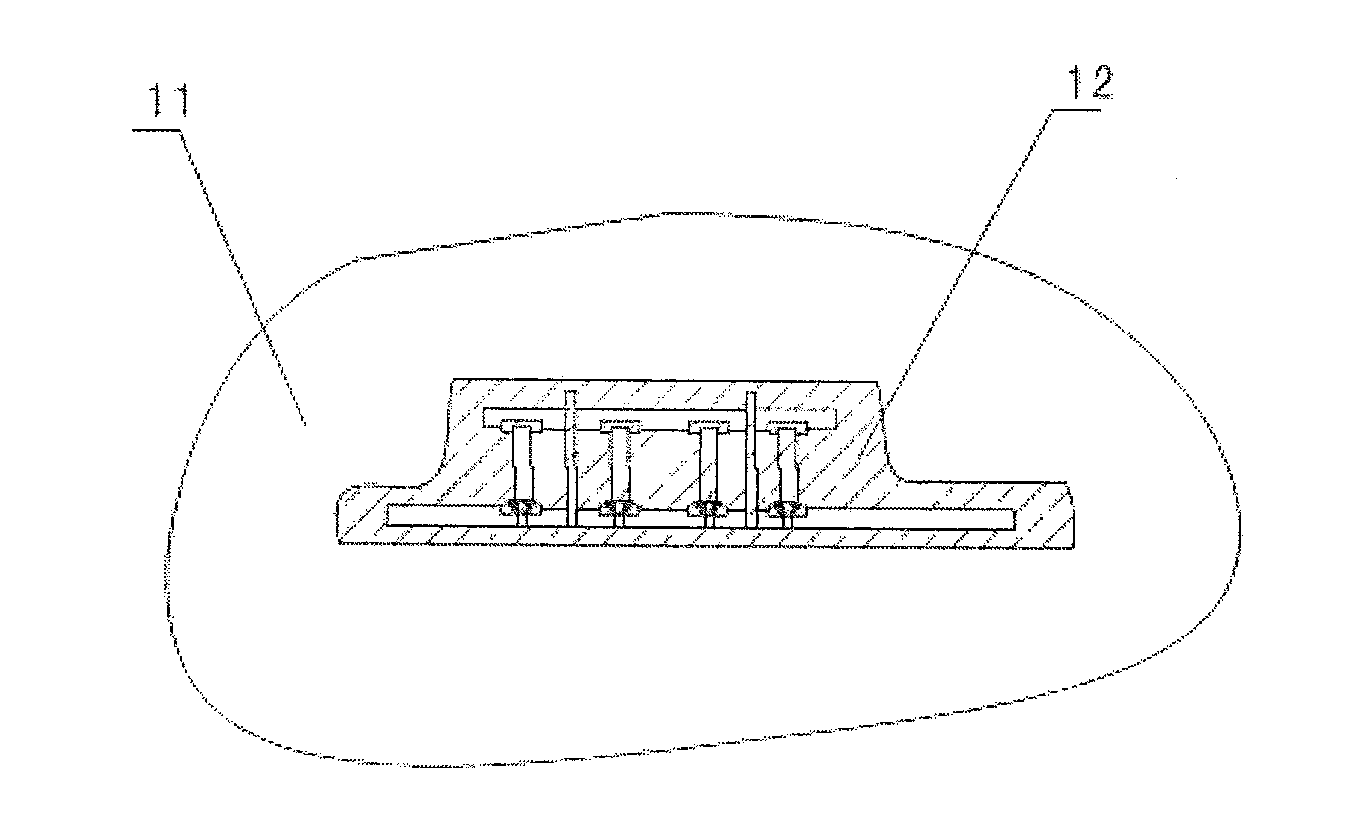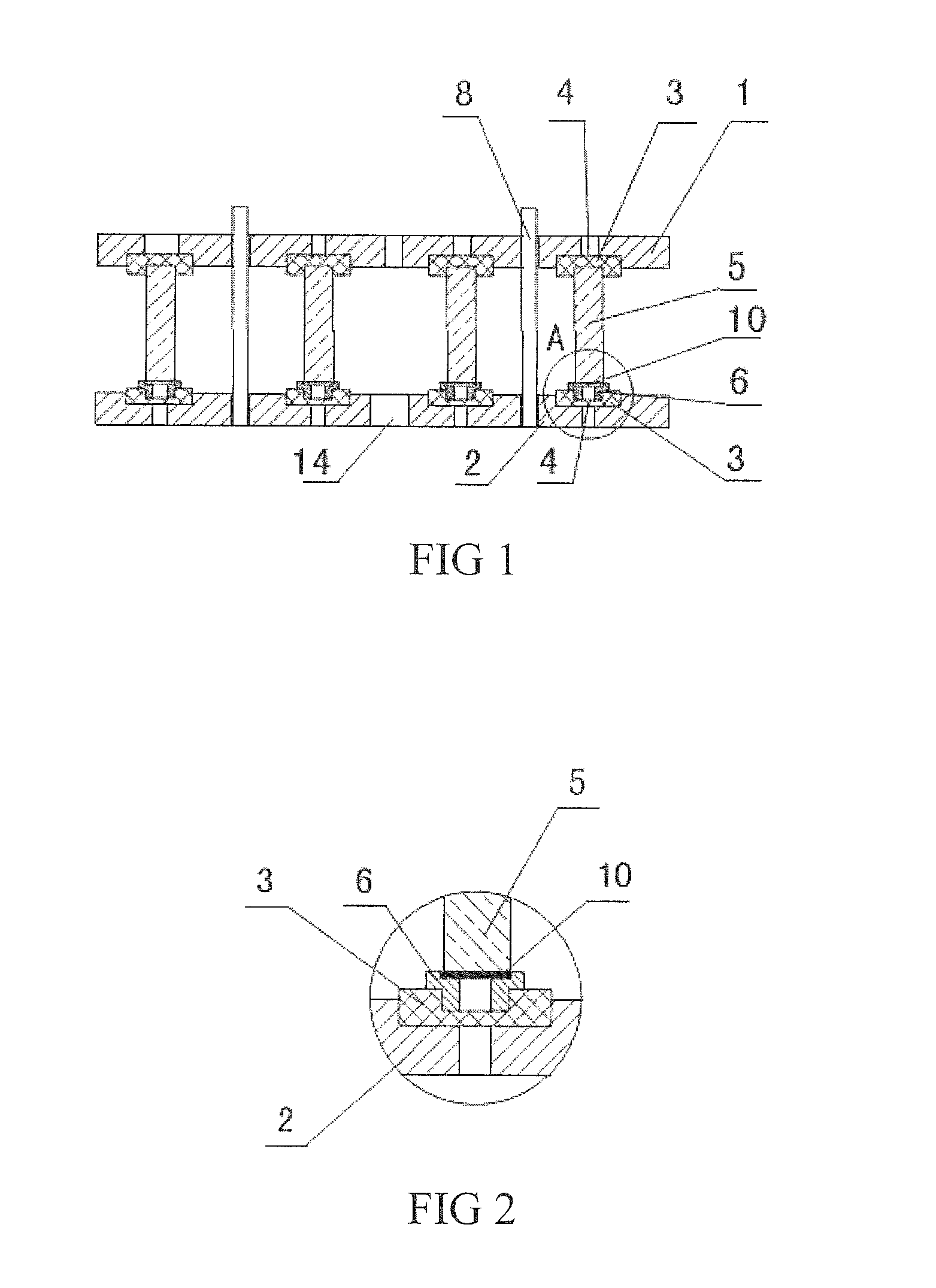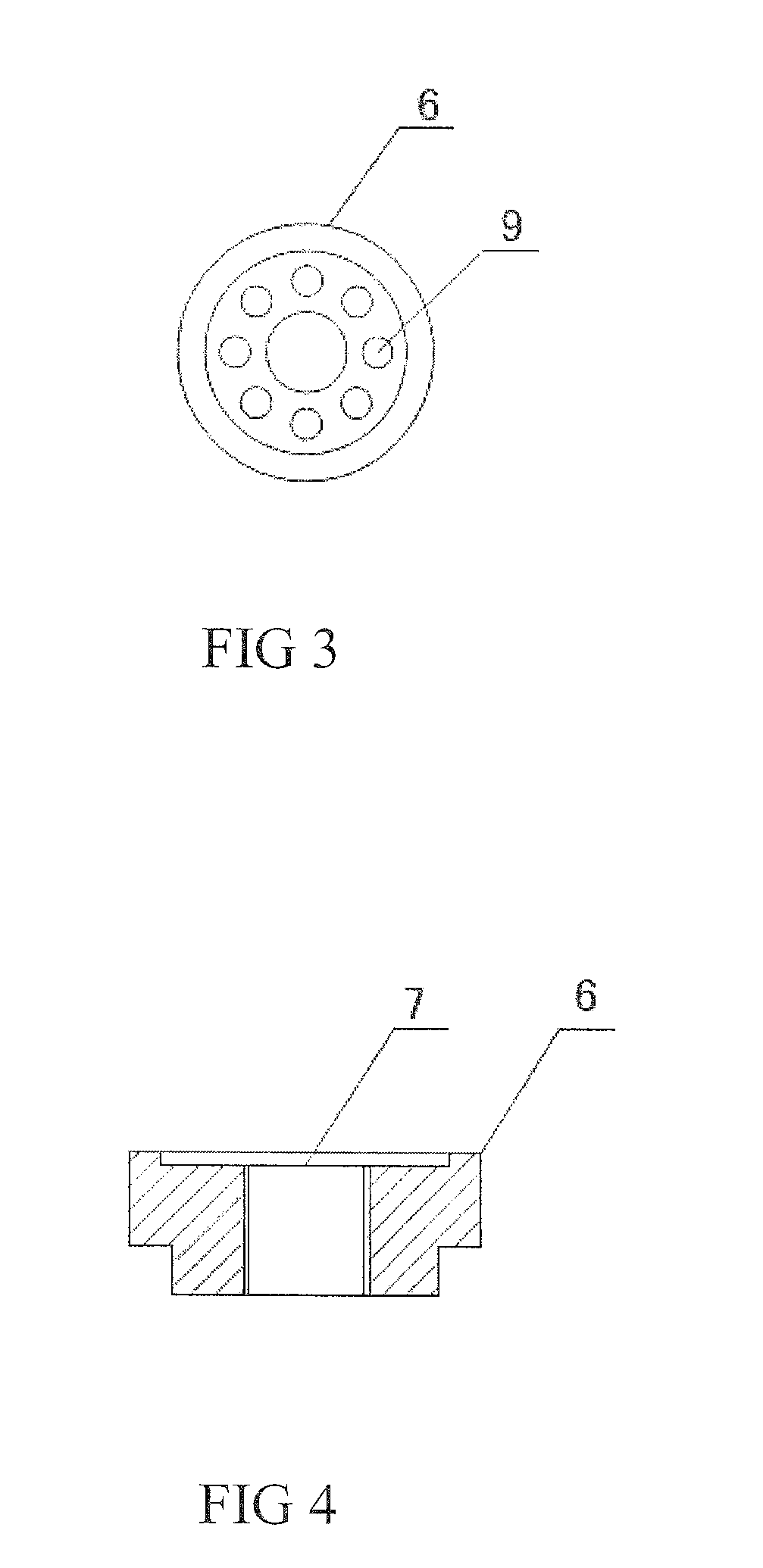Method for Reliably Soldering Microwave Dielectric Ceramics with Metal
a microwave dielectric ceramic and reliably soldering technology, applied in the field of soldering, can solve the problems of ceramic breakage, relatively narrow application scope, and inability to reliably solder ultrahigh metal cavities, and achieve the effect of saving soldering cost and improving environmental reliability of soldered structural components
- Summary
- Abstract
- Description
- Claims
- Application Information
AI Technical Summary
Benefits of technology
Problems solved by technology
Method used
Image
Examples
embodiment 1
[0037]As shown in FIG. 1 and FIG. 2, a method for reliably soldering microwave dielectric ceramics with metal comprises the following steps of:
[0038](1) uniformly coating a layer of lead-free solder paste 10 on a silver-plated end face 6 of microwave dielectric ceramics 5 and fixing the microwave dielectric ceramics on a positioning groove 7 of a silver-plated metal base 6, then placing the microwave dielectric ceramics and the silver-plated metal base, as a whole, in notches 4 of an upper positioning plate 1 and a lower positioning plate 2, and clamping and fixing the upper positioning plate 1 and the lower positioning plate 2 through a positioning pin 8 to form a component to be soldered;
[0039](2) putting the component to be soldered in a sealed container filled with perfluoropolyether liquid;
[0040](3) heating the perfluoropolyether liquid at the rate of 0.5° C. / sec until uniform perfluoropolyether vapor 11 is formed;
[0041](4) preserving heat for 2 minutes until the temperature of...
embodiment 2
[0043]A method for reliably soldering microwave dielectric ceramics with metal comprises the steps 1 and 2 same as those in the above embodiment 1 and further comprises the steps of:
[0044](3) heating the perfluoropolyether liquid at the rate of 3° C. / sec until uniform perfluoropolyether vapor 11 is formed;
[0045](4) preserving heat for 0.5 minutes until the temperature of the component to be soldered is identical to that of the vapor, wherein in this process, the perfluoropolyether vapor 11 is subjected to heat exchange with a contact face of the silver-plated end face 6 and the microwave dielectric ceramics 5 and a liquid film 12 is formed, thus the lead-free solder paste 10 covered by the liquid film 12 is molten to form a soldering side; and
[0046](5) cooling at the rate of 3° C. / sec.
embodiment 3
[0047]A method for reliably soldering microwave dielectric ceramics with metal comprises the steps 1 and 2 same as those in the above embodiment 1 and further comprises the steps of:
[0048](3) heating the perfluoropolyether liquid at the rate of 2° C. / sec until uniform perfluoropolyether vapor 11 is formed;
[0049](4) preserving heat for 1 minute until the temperature of the component to be soldered is identical to that of the vapor, wherein in this process, the perfluoropolyether vapor 11 is subjected to heat exchange with a contact face of the silver-plated end face 6 and the microwave dielectric ceramics 5 and a liquid film 12 is formed, thus the lead-free solder paste 10 covered by the liquid film 12 is molten to form a soldering side; and
[0050](5) cooling at the rate of 2° C. / sec.
PUM
| Property | Measurement | Unit |
|---|---|---|
| microwave dielectric | aaaaa | aaaaa |
| temperature | aaaaa | aaaaa |
| insulating | aaaaa | aaaaa |
Abstract
Description
Claims
Application Information
 Login to View More
Login to View More - R&D
- Intellectual Property
- Life Sciences
- Materials
- Tech Scout
- Unparalleled Data Quality
- Higher Quality Content
- 60% Fewer Hallucinations
Browse by: Latest US Patents, China's latest patents, Technical Efficacy Thesaurus, Application Domain, Technology Topic, Popular Technical Reports.
© 2025 PatSnap. All rights reserved.Legal|Privacy policy|Modern Slavery Act Transparency Statement|Sitemap|About US| Contact US: help@patsnap.com



